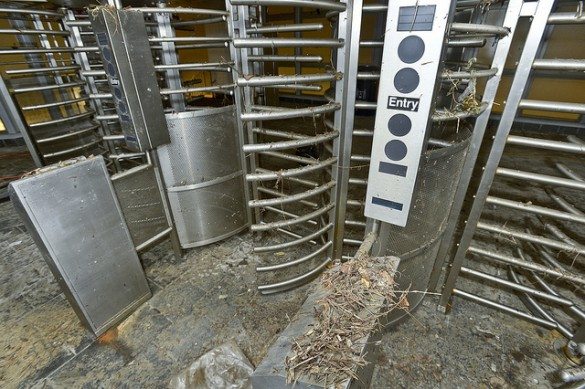Water-Proofing The Subway System: Concerns Over Dollars And Logistics

As the $60 billion Sandy aid package finally gets doled out, it is interesting to see how that mountain of money actually gets spent. A New York Post editorial highlights how Governor Andrew Cuomo intends to spend $6 billion worth of the pie on water-proofing the city’s subway system.
On top of the $6 billion set aside to figure out a way to somehow make sure the subway doesn’t get flooded again, the MTA is also receiving $4.8 billion in federal funds for general Sandy repairs. The Post editorial takes aim at Cuomo and the MTA for trumping up the damage estimates to ensure the biggest federal payout possible.
For example, when accessing the damage to the A train tracks in the Rockaways, the MTA guessed that they would need $650 million. Construction on that line is nearly finished and will open at the end of the month. In Cuomo’s actual budget released at the end of March, the cost so far has only amounted to $17.9 million. According to the Post, something isn’t adding up:
From photo op to photo op, there’s no reconciliation between huge initial numbers and later smaller ones. But this seeming opposite of a massive cost overrun isn’t that surprising — and it’s more Cuomo’s fault than the MTA’s.
Last year, the MTA was under huge pressure to announce huge numbers, fast — or watch the state lose out on federal aid. And now that the state has secured that cash, no one much cares what happens to it. After all, the money was free.
The cost overruns are creating questions as to where the money earmarked for the ‘water-proofing’ plan is going and how exactly it will be spent. While officials have solutions on how to protect above ground subways from storm surges by building protective walls, they have less of a clear picture on how to protect the underground portion of the system.
At a recent press conference, MTA chief Tom Prendergast admitted that he has no idea how to prevent flooding in places like Lower Manhattan, which has over 500 flood entry points alone.
The Post noted that many ideas floated to protect the underground subway are practical and low on cost, like installing deployable watertight grates across vents and stairways and placing inflatable bladders in key locations. Despite this, the Post is guessing that Cuomo and the MTA will likely favor a more expensive and futuristic idea that makes full use of the billions headed their way.




